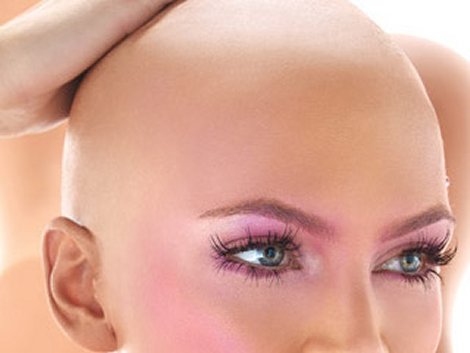Hair Loss in the U.S.

From the beginning of times people were suffering hair loss. It can be called in many different ways: androgenic alopecia, telogen effluvium, alopecia areata, etc. All depends on the primary reason that caused hair loss. Some people panic when they start experiencing this problem, but they should understand that they are not alone.
About 12 to 15 percent of the population of any country suffers from the most common type: androgenic alopecia. Many people know it as pattern baldness. It is usually an inherited type of hair loss which can happen to both men and women. The chances to have androgenic alopecia increase with age. After the age of 35 more than 40 percent of men suffer this hair loss problem, by the age of 60 nearly 65% have noticeable hair loss and the number gets higher as they become older. Overall it is considered that near 35 million men in the U.S. has male pattern baldness. This makes 95% of bald men, the other 5% have different types such as alopecia areata, hair loss caused by diseases or their treatments, etc.
While the society is not well aware of female baldness, it happens almost as often as to men. Women also have cases of androgenic alopecia. The chances to get it increase after menopause. Statistics shows that 21 million women in America suffer from female pattern baldness: 13% of the premenopausal women notice that their hair becomes thinner; 75% women suffer hair loss at the age of 65 and older. Most of them desperately try to hide it because they think hair loss happens very rarely and the society will not accept them with this problem.
Besides androgenic alopecia women suffer from other types of hair loss as well. For example, almost all women experience from mild to severe hair loss after they give birth. It is called telogen effluvium and is temporary. The other causes for hair loss in women are medical problems, prescription medications and certain medical procedures like chemotherapy, nutrient deficiency, hair trauma (tight hair styles), skin diseases and immune problems.
Hair loss happens in children too. While they do not have androgenic alopecia, children might lose hair because of ringworm, alopecia areata, health problems and their treatment. Hair loss makes three percent of all pediatric office visits.
As for the treatment of hair loss, the facts go this way:
• 65% men accept balding as a normal inescapable event;
• Despite of this fact, many of them seek for some kind of treatment: 85% use the FDA-approved drug, Minoxidil, and 15% give their preference to Finasteride;
• 85% of women use Minoxidil solution for their problem, 15% of them use topical Minoxidil;
• Only 5% of all hair loss treatments on the market have been approved by FDA as effective products;
• 50% of women see their doctors regarding hair loss problem, but only 25% men decide to do the same;
• Men are more likely to use hair restoration surgery in case of permanent hair loss;
• In the last 5 years the number of such surgeries went 12% up;
• The number of hair loss sufferers seeking for professional treatment has more than doubled between 2004 and 2008.
While there is nothing offensive about hair loss, some people believe that without hair scalp does not have the protection from ultra violet rays, so a bald person receives more radiation and the chances to have myocardial infarction increase. The theories like this one have not been proven by any studies and cannot be trusted.
While nobody is condemned for having no hair, it is interesting to know that 30% of all people suffering from hair loss would give up sex if it meant they would get their hair back. Almost 50% of balding people are ready to give up all the money they have, just to have a head full of hair once again.
Nick Brady
Posted on May 18, 2010
Filed Under Hair Loss, Hair Loss News and Statistics, Hair Loss Reasons, Hair Loss Treatments
Comments
Leave a Reply
